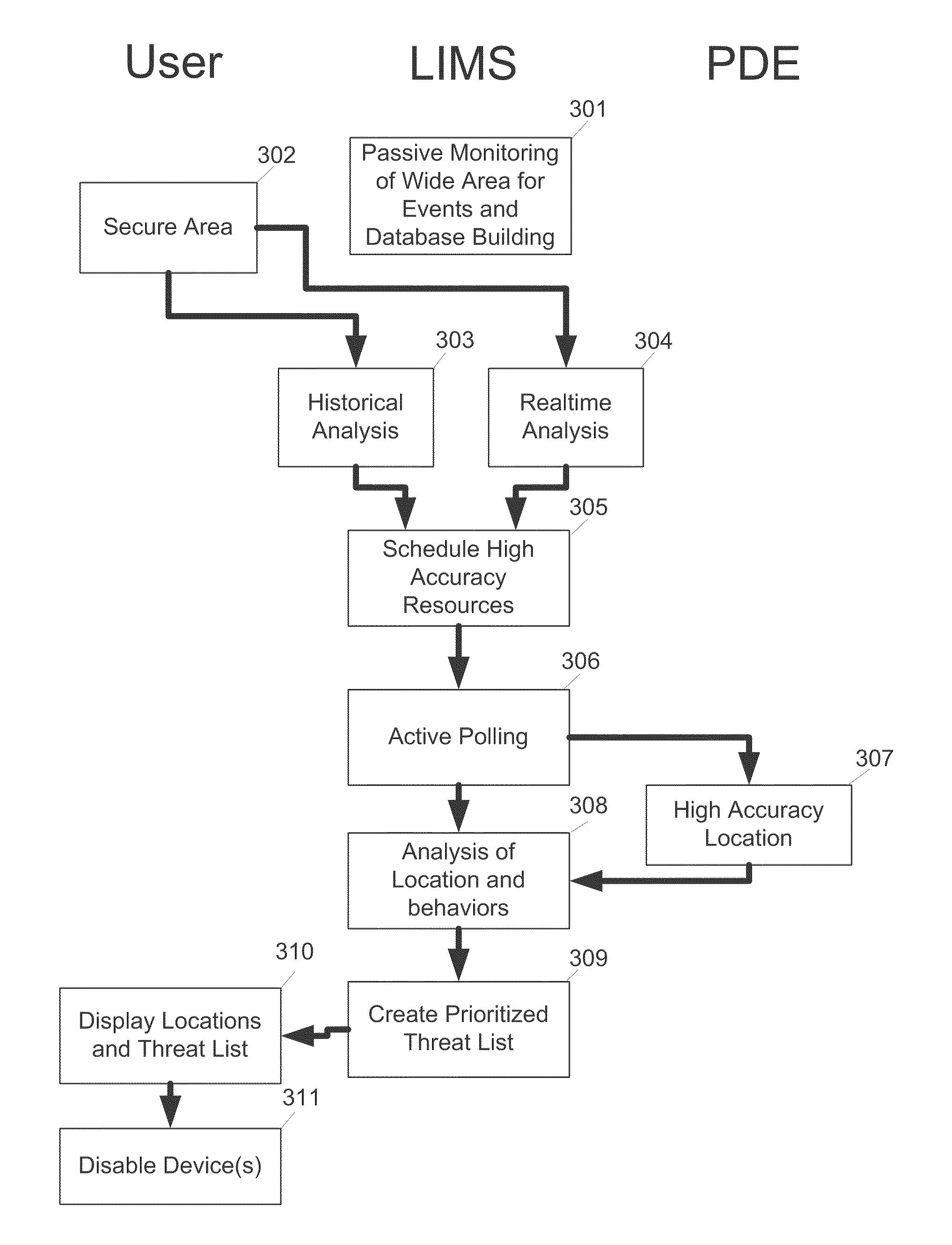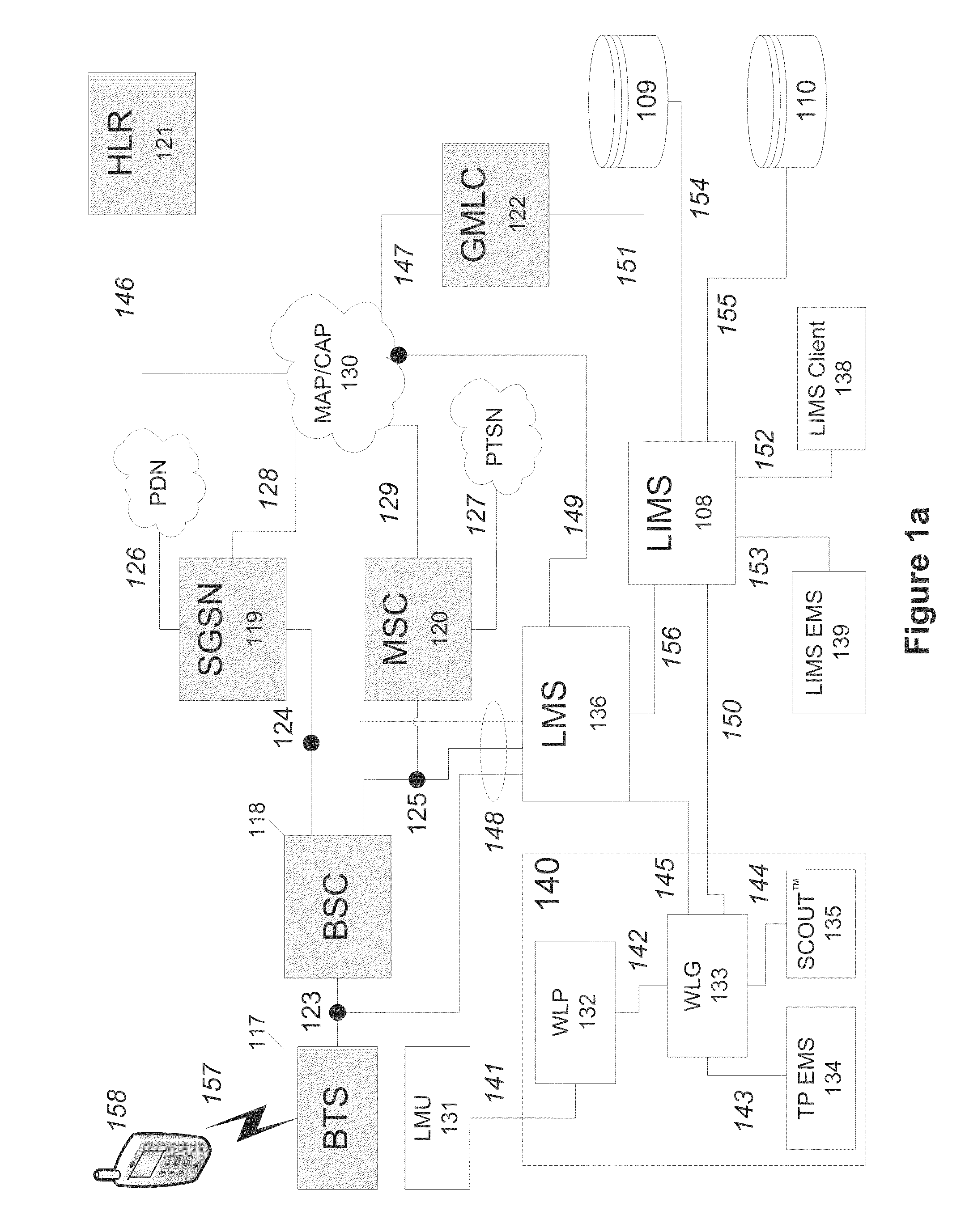Location Intelligence Management System
a technology of location intelligence and management system, applied in the field of wireless location methods and apparatus, can solve problems such as limited use, and achieve the effect of optimizing utilization (scheduling and selecting) of wireless location resources
- Summary
- Abstract
- Description
- Claims
- Application Information
AI Technical Summary
Benefits of technology
Problems solved by technology
Method used
Image
Examples
Embodiment Construction
[0020]We will now describe illustrative embodiments of the present invention. First, we provide a detailed overview of the problem and then a more detailed description of our solutions.
[0021]FIG. 1 illustrates the LIMS as deployed in a generic wireless communications Network (WCN). The Radio Access Network (RAN) 101 provides the radio link between the mobile device and the Core Network 102. Examples of a RAN network can include the Global System for Mobility (GSM), iDEN, Tetra, Universal Mobile Telephone System (UMTS), WiMAN, WiMAX, Long-Term-Evolution (LTE), Generic Access Network (GAN), and the IS-95 / IS-2000 family of CDMA protocols among others. The Core Network provides the basic switching, routing, transcoding, metering, and interworking needed to connect and bill mobile-to-land, land-to-mobile, and mobile-to-mobile connections. The core network connects to landside networks and other mobile networks via the Public Interconnection Network 103 (nominally a SS7 network with trunk...
PUM
 Login to View More
Login to View More Abstract
Description
Claims
Application Information
 Login to View More
Login to View More - R&D
- Intellectual Property
- Life Sciences
- Materials
- Tech Scout
- Unparalleled Data Quality
- Higher Quality Content
- 60% Fewer Hallucinations
Browse by: Latest US Patents, China's latest patents, Technical Efficacy Thesaurus, Application Domain, Technology Topic, Popular Technical Reports.
© 2025 PatSnap. All rights reserved.Legal|Privacy policy|Modern Slavery Act Transparency Statement|Sitemap|About US| Contact US: help@patsnap.com



